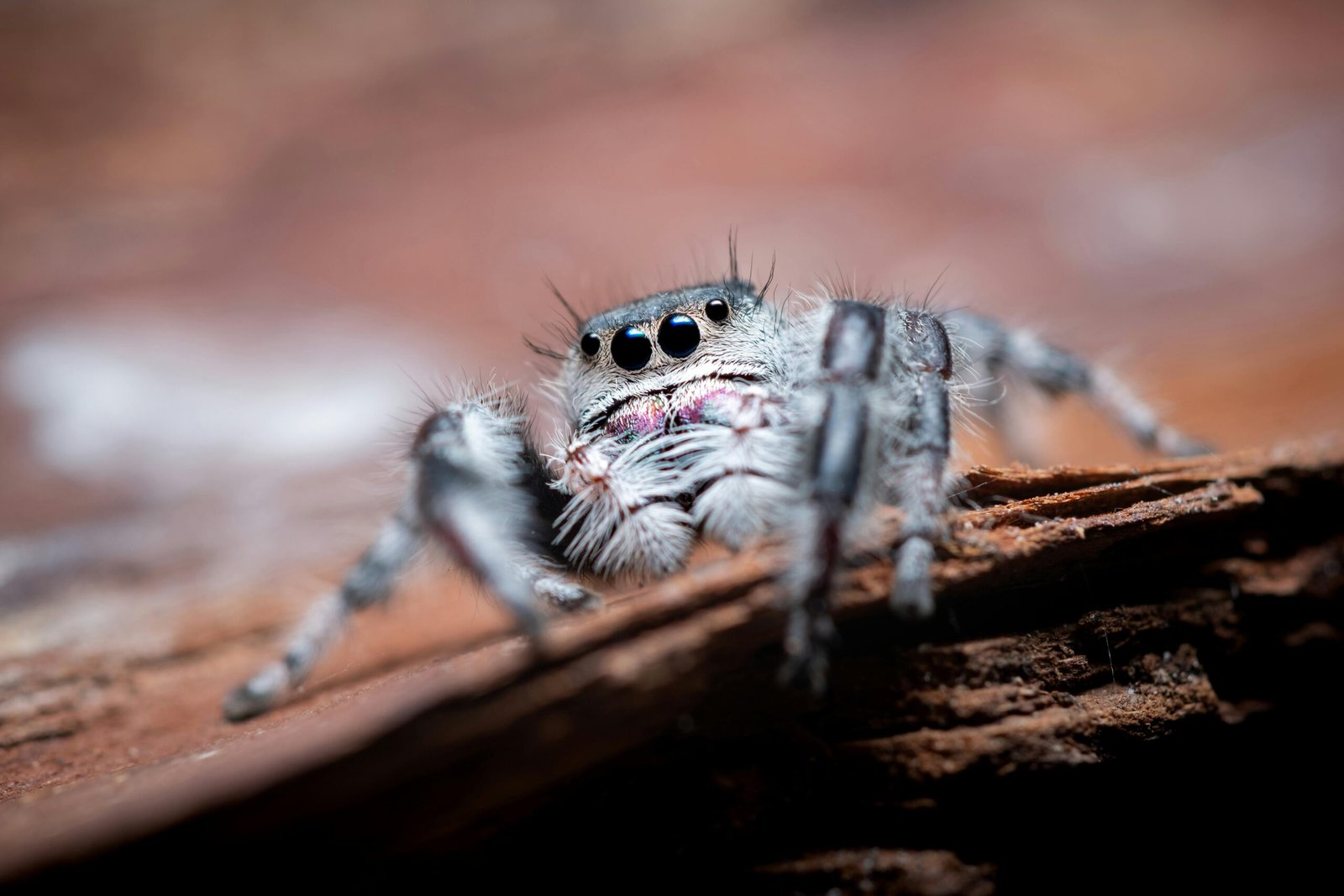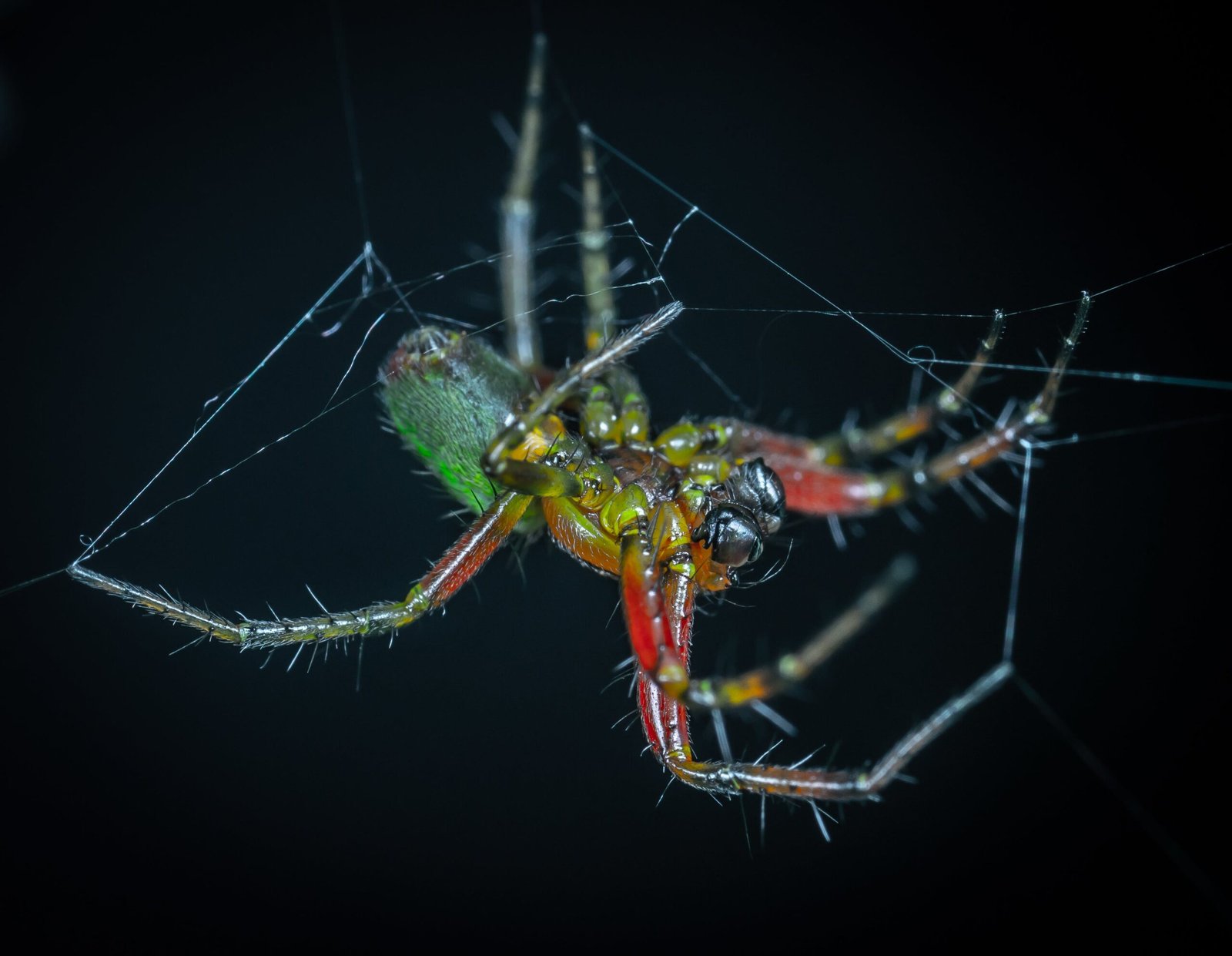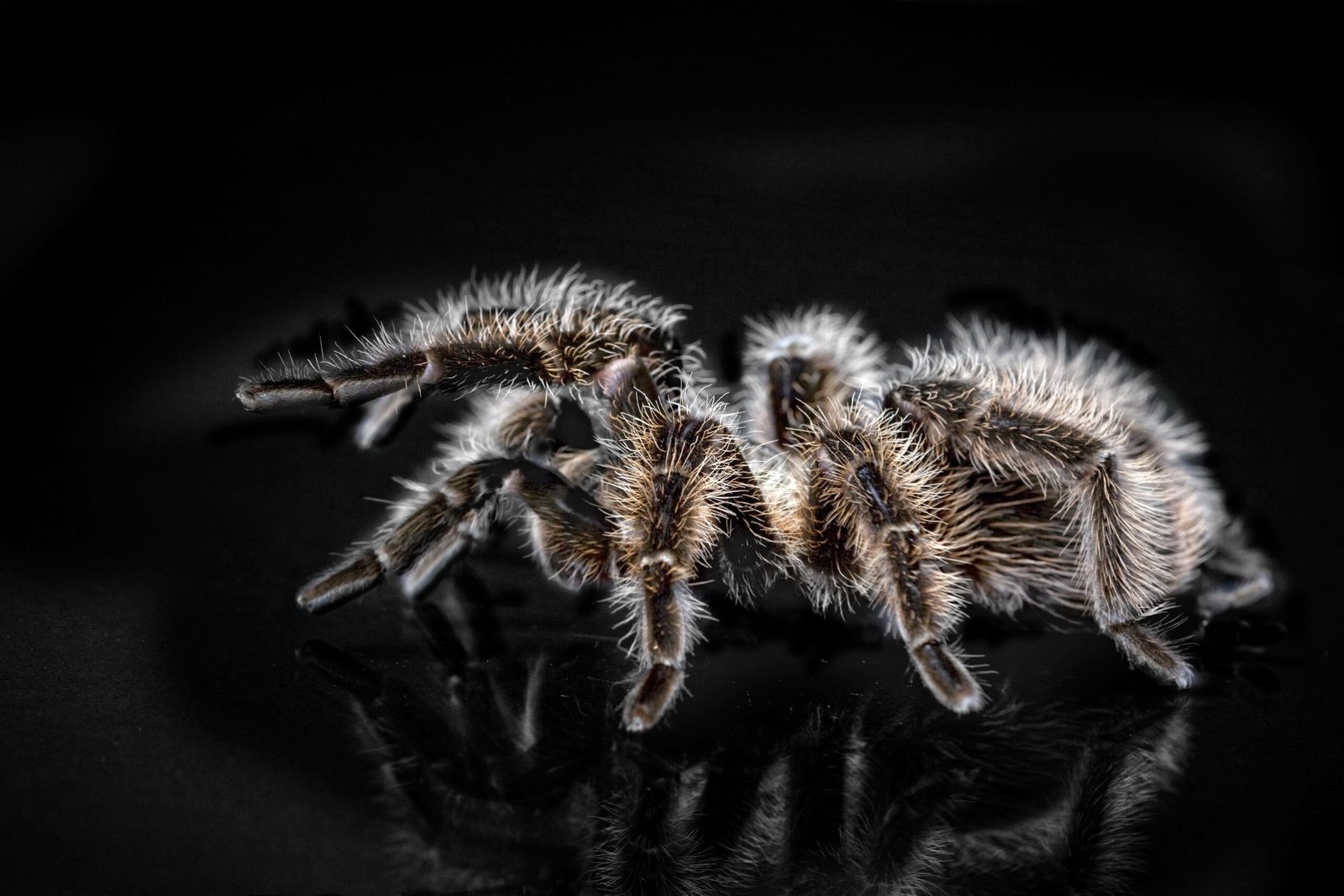Have you ever wondered how to create the perfect naturalistic habitat for breeding tarantulas? If you are passionate about these fascinating creatures and have dreamt of witnessing the miracle of tarantula breeding, this article is for you. Discover the secrets to providing an environment that mimics the natural habitat of tarantulas, ensuring their comfort and encouraging successful breeding. From temperature and humidity control to proper substrate and hiding spots, we will guide you step-by-step in creating an ideal haven for these magnificent arachnids. Get ready to embark on an exciting journey into the world of tarantula breeding!
Choosing the Right Tarantula Species
When it comes to choosing the right tarantula species, it’s important to do your research. There are over 900 species of tarantulas, each with their own unique characteristics and care requirements. By researching different tarantula species, you can narrow down your options and find the perfect one for you.
Consider the Size and Space Requirements
Tarantulas come in a variety of sizes, ranging from small and delicate to large and intimidating. It’s important to consider the size and space requirements of the species you are interested in before making a decision. Some species require larger enclosures, while others can thrive in smaller spaces. Evaluating the space you have available and comparing it to the needs of the tarantula species will help ensure a suitable match.
Learn about the Breeding Behavior of the Species
If your goal is to breed tarantulas, it’s crucial to learn about the breeding behavior of the species you are interested in. Tarantulas have different mating rituals and requirements, and understanding these behaviors will greatly increase your chances of successfully breeding them. Researching the specific species’ mating habits, courtship displays, and reproductive needs will enable you to create a suitable environment for successful breeding.
Creating an Enclosure
Once you have chosen the right tarantula species, it’s time to create an enclosure that meets their needs. Providing a suitable enclosure is essential for the well-being and comfort of your tarantula.
Select a Suitable Enclosure
When selecting an enclosure for your tarantula, it’s important to consider factors such as size, material, and ventilation. Tarantulas need enough space to move around comfortably, so choose an enclosure that allows for adequate movement. The material of the enclosure should be escape-proof and durable. Additionally, proper ventilation is crucial to prevent excessive humidity and promote good air circulation.
Provide Sufficient Space
Tarantulas require enough space to move and explore their environment. Providing a spacious enclosure allows them to exercise their natural behaviors and reduces stress. A general rule of thumb is to choose an enclosure at least three times the leg span of your tarantula, but larger is always better. Remember to include hiding spots and climbing structures to mimic their natural habitat.
Include Proper Ventilation
Proper ventilation is crucial in maintaining a healthy tarantula enclosure. It helps regulate temperature, control humidity, and ensures the circulation of fresh air. You can achieve proper ventilation by including vents or mesh screens in the enclosure design. However, be cautious not to create openings that are large enough for the tarantula to escape.
Use Appropriate Substrate
Choosing the right substrate is essential for the comfort and well-being of your tarantula. Substrate refers to the material placed on the floor of the enclosure. It should be moisture-retentive and mimic the tarantula’s natural habitat. Popular choices include coconut fiber, vermiculite, or a mix of organic soil and sphagnum moss. Avoid substrates that contain chemicals or pesticides that could harm your tarantula.
Add Climbing Structures and Hiding Places
Tarantulas are natural climbers and providing them with appropriate climbing structures is beneficial to their overall well-being. Branches, cork bark, and other natural materials can be used to create a vertical environment for your tarantula to explore and feel secure. Additionally, tarantulas are reclusive creatures that require hiding places to feel safe. Adding hollow logs, PVC pipes, or artificial hideouts will give your tarantula a place to retreat when it feels stressed.

Maintaining Temperature and Humidity
Maintaining the proper temperature and humidity levels in your tarantula’s enclosure is vital to their health and well-being. Tarantulas are ectothermic creatures, meaning they rely on their environment to regulate their body temperature.
Understand Preferred Temperature Range
Each tarantula species has a preferred temperature range that they thrive in. Research the specific temperature needs of your tarantula species and ensure their enclosure is within that range. Generally, tropical tarantulas prefer a temperature range between 75 to 85 degrees Fahrenheit (24 to 29 degrees Celsius), while desert species thrive in temperatures between 80 to 90 degrees Fahrenheit (27 to 32 degrees Celsius).
Use Thermometers and Hygrometers
To accurately monitor and regulate the temperature and humidity levels in your tarantula’s enclosure, it is recommended to use thermometers and hygrometers. Place these devices in different areas of the enclosure to ensure an accurate reading of the temperature and humidity throughout the entire habitat. This will help you adjust the conditions as needed to maintain optimal levels.
Regulate Temperature with Heating Devices
If the temperature in the tarantula’s enclosure falls below the desired range, you may need to use heating devices to maintain warmth. Heat mats or heat lamps can be used to provide the necessary warmth, but ensure they are set up in a way that prevents direct contact with the tarantula, as excessive heat can harm them. It’s important to choose heating devices with thermostats to prevent overheating.
Manage Humidity with Moisture Sources
Tarantulas from different regions have varying humidity requirements. Research your tarantula species’ preferred humidity levels and provide moisture sources accordingly. Spraying the enclosure with water or using a misting system can help maintain humidity levels. Additionally, providing a water dish or moisture-retaining substrate can help increase humidity in the enclosure. Regularly monitor and adjust humidity levels to ensure they remain within the appropriate range.
Avoid Extreme Temperature and Humidity Fluctuations
It’s crucial to avoid extreme temperature and humidity fluctuations in your tarantula’s enclosure. Sudden changes in temperature or humidity can stress the tarantula and have detrimental effects on their health. Maintain a stable and consistent environment by monitoring and adjusting temperature and humidity levels regularly.
Lighting and Photoperiod
While tarantulas are not dependent on light in the same way as other animals, providing suitable lighting and establishing a proper photoperiod can benefit their overall well-being.
Provide Natural or Artificial Light
Tarantulas are primarily nocturnal creatures, meaning they are more active during the night. However, it’s still important to provide a light source to simulate a natural day and night cycle. Natural light can be achieved by placing the enclosure near a window, but ensure it is not exposed to direct sunlight, as this can cause excessive heat. Artificial lighting, such as LED or fluorescent bulbs, can also be used to provide an appropriate amount of light.
Establish a Suitable Photoperiod
Establishing a suitable photoperiod involves creating a consistent schedule of light and darkness in your tarantula’s enclosure. Maintaining a photoperiod that aligns with their natural habitat can help regulate their activity and promote a sense of normalcy. For nocturnal tarantulas, provide around 12 hours of darkness and 12 hours of dim lighting or complete darkness during the day.
Consider Tarantula’s Nocturnal Behavior
As mentioned earlier, tarantulas are primarily nocturnal creatures. They are most active during the night and prefer a dimly lit environment during the day. Avoid exposing them to bright lights or sudden changes in lighting, as this can stress them out. Providing a dark and quiet environment during their active period will promote natural behavior and reduce the risk of stress-related issues.

Feeding and Hydration
Proper nutrition and hydration are essential for the health and longevity of your tarantula. Understanding their dietary needs and providing the necessary resources will ensure their well-being.
Offer a Varied Diet
Tarantulas are carnivores and primarily feed on live prey. It’s important to offer them a varied diet to ensure they receive all the necessary nutrients. Common prey options include crickets, roaches, and mealworms. You can also offer occasional treats such as small vertebrates or invertebrates, but avoid feeding them toxic or potentially harmful prey.
Provide Live Prey
Tarantulas are known for their remarkable hunting skills, and allowing them to hunt live prey stimulates their natural instincts. Live prey also provides important mental and physical stimulation for your tarantula. Ensure the prey is an appropriate size and never leave it unattended in the enclosure for an extended period, as it can harm or stress the tarantula.
Ensure Proper Feeding Schedule
Establishing a regular feeding schedule is vital to ensure your tarantula receives adequate nutrition. The frequency of feeding depends on the species, age, and size of your tarantula. Generally, adult tarantulas can be fed every 1 to 2 weeks, while spiderlings may require more frequent feedings. Observe your tarantula’s feeding response and adjust the frequency as needed.
Monitor Feeding Responses
Observing your tarantula’s feeding responses is crucial to ensure they are healthy and consuming enough food. Pay attention to their appetite, hunting behavior, and overall appearance. A healthy tarantula will actively pursue prey, capture it efficiently, and consume it without hesitation. If you notice a decrease in appetite or abnormal feeding behavior, it may indicate an underlying health issue that needs attention.
Offer Fresh Water
Tarantulas also require a fresh and clean water source for hydration. Providing a shallow water dish filled with fresh water allows them to drink when needed. Spiderlings may require smaller water dishes to prevent drowning. Ensure the water dish is easily accessible and regularly check and refill it to maintain proper hydration levels.
Simulating Natural Environment
Simulating a natural environment for your tarantula is crucial in providing them with a suitable habitat that mimics their natural surroundings. This helps create a sense of security and encourages natural behaviors.
Research Tarantula’s Natural Habitat
Researching your tarantula species’ natural habitat is key to understanding their environmental needs. Learn about the climate, humidity levels, and types of plants or decorations found in their native habitat. This information will guide you in creating an environment that closely resembles their natural home.
Recreate Natural Elements
To create a naturalistic habitat, it’s important to replicate the natural elements found in your tarantula’s native habitat. This includes adding rocks, branches, and plants that mimic the scenery of their natural environment. These natural elements serve as hiding places, climbing structures, and areas for your tarantula to explore.
Consider Native Plants and Decorations
Adding native plants and decorations to the enclosure can further enhance the natural look and feel of the habitat. Live plants, such as bromeliads or spider plants, can provide additional hiding spots and contribute to the overall humidity level in the enclosure. Ensure the plants are safe for your tarantula and do not contain any toxic substances.

Maintaining Cleanliness
Regularly maintaining cleanliness in your tarantula’s enclosure is essential to prevent the buildup of waste, bacteria, and fungi. However, it’s important to strike a balance between cleanliness and retaining the tarantula’s natural odor and microbiome.
Regularly Remove Food Remains and Excretions
Removing uneaten prey and waste from the enclosure is crucial to prevent pests, mold, and bacteria growth. Uneaten prey can attract unwanted pests, while waste can contaminate the enclosure and lead to health issues. Use tongs or other tools to safely remove any uneaten food remains and clean the enclosure regularly.
Clean Enclosure Surfaces
Keeping the enclosure surfaces clean and free from debris is important for maintaining a healthy environment for your tarantula. Remove any leftover prey parts, molted exoskeletons, or shed skins. Gently wipe down the enclosure walls and surfaces with a damp cloth or sponge to remove any dirt or residue. Avoid using harsh chemicals or cleaning agents that can be harmful to your tarantula.
Avoid Over-cleaning to Retain Odor and Microbiome
While it’s important to maintain cleanliness, it’s equally crucial to avoid over-cleaning the enclosure. Tarantulas have a unique odor and microbiome that contribute to their overall well-being. Over-cleaning can disrupt the natural balance and negatively affect your tarantula’s health. Strike a balance between cleanliness and preserving their natural environment.
Sanitize Tools and Equipment
When handling or maintaining your tarantula’s enclosure, it’s essential to sanitize tools and equipment to prevent the spread of bacteria or potential diseases. Use a mild bleach solution or an appropriate disinfectant to clean tools, such as tongs or tweezers, before and after each use. This helps ensure a clean and safe environment for both you and your tarantula.
Monitoring and Observation
Regularly monitoring and observing your tarantula is crucial to assess their behavior, health, and overall well-being. By keeping a close eye on them, you can identify any potential issues and take appropriate action.
Regularly Check Tarantula’s Behavior and Health
Make it a habit to regularly observe your tarantula’s behavior and overall health. Pay attention to their activity levels, feeding responses, and grooming habits. Any significant changes in behavior or appearance, such as lethargy, loss of appetite, or physical abnormalities, can indicate a health concern that requires attention from a qualified exotic veterinarian.
Observe Mating and Courtship Displays
If you are breeding tarantulas, observing their mating and courtship displays is essential. Different tarantula species have unique courtship behaviors and rituals. By observing their interactions, you can determine when the female is receptive to mating and when to introduce the male to her enclosure. Understanding these behaviors will increase the chances of successful breeding.
Monitor Molting Process
Tarantulas undergo a molting process to shed their old exoskeleton and grow. It’s important to closely monitor this process, as it can be a vulnerable time for your tarantula. Provide a suitable hiding place and ensure the enclosure’s humidity levels are appropriate during this time. Avoid disturbing or handling your tarantula during molting, as it can lead to complications.
Keep Records of Observations
Keeping records of your tarantula’s behavior, health, and breeding activities can be valuable in tracking their progress and identifying any recurring patterns or issues. Note down feeding schedules, mating behaviors, and any significant observations. This record will be helpful in understanding your tarantula’s needs and history, especially if you plan to breed or seek veterinary advice.
Watch for Signs of Stress or Illness
Tarantulas can experience stress or illness, and it’s essential to watch for signs indicating these conditions. Symptoms can include lethargy, excessive grooming, loss of appetite, abnormal posture, or discoloration. If you notice any signs of stress or illness, consult a qualified exotic veterinarian as soon as possible for a proper diagnosis and appropriate treatment.

Breeding Stimulus
Breeding tarantulas can be a rewarding experience, but it requires careful planning and consideration. To stimulate the breeding process, certain conditions must be met.
Create Seasonal Temperature and Light Changes
Tarantulas respond to seasonal temperature and light changes in their natural habitat, and replicating these conditions can stimulate breeding behaviors. Mimic the temperature and lighting variations in their native environment to signal the appropriate breeding season. Gradually adjust the temperature and lighting over a period of time to simulate seasonal changes.
Decide on Suitable Pairing
Before introducing a male and female tarantula for breeding, it’s important to carefully consider their compatibility. Select tarantulas of the same species and similar size, taking into account their temperament, health, and genetic diversity. Research the specific pairing requirements for your chosen species to increase the chances of successful breeding.
Introduce the Male to the Female’s Enclosure
When it’s time for breeding, carefully introduce the male tarantula to the female’s enclosure. Monitor their behavior closely during this process, as females can display aggressive behaviors towards the male if they are not receptive to mating. Keep a close eye on their interactions and be prepared to separate them if necessary.
Observe and Assess Female’s Readiness
Observing the female’s behavior is crucial in assessing her readiness for mating. Signs of receptiveness can include raising the front legs, lifting the abdomen, and remaining still or receptive to the male’s advances. However, each species may display unique courtship behaviors, so thorough research and observation are essential to determine their readiness.
Ensure Safety During the Mating Process
During the mating process, it’s important to ensure the safety of both the male and female tarantula. Provide ample space and a suitable environment for mating to occur. Avoid disturbing the pair once mating has started, as any interruption can potentially lead to injury or stress. Monitor the process from a safe and respectful distance.
Caring for Spiderlings
When tarantula eggs hatch, caring for the spiderlings requires special attention. These tiny creatures are delicate and vulnerable, requiring specific care to ensure their survival and healthy development.
Separate Spiderlings from the Female
Once the spiderlings have hatched, it’s crucial to separate them from the female to prevent cannibalism. Gradually and carefully transfer the spiderlings to individual enclosures, taking care not to stress or harm them in the process. Provide small and secure enclosures that mimic their natural habitat.
Create Individual Enclosures for Spiderlings
Spiderlings require their own individual enclosures to ensure their safety and well-being. Use small and escape-proof enclosures that are appropriately sized for the spiderlings. Provide hiding places, climbing structures, and suitable substrate to meet their specific needs. The enclosure should be free from any potential hazards and cleaned regularly to maintain a healthy environment.
Provide Adequate Moisture and Food
Spiderlings have unique moisture and nutrition needs. Provide a moist environment by slightly increasing the humidity levels in their enclosures. Mist the enclosure lightly with water and ensure the substrate remains slightly damp but not soaking wet. Offer small, live prey that is appropriate for the size of the spiderlings to ensure they receive proper nutrition.
Ensure Appropriate Temperature and Humidity
Maintaining the appropriate temperature and humidity levels is crucial for the growth and development of spiderlings. Research the specific requirements of your tarantula species and adjust the conditions accordingly. Monitor the temperature and humidity levels regularly, ensuring they remain within the appropriate range for the spiderlings’ well-being.
Monitor Growth and Development
Monitor the growth and development of the spiderlings closely to ensure they are thriving. Regularly record their size, behavior, and feeding responses. As they molt and grow, adjust their enclosures and feeding regimen accordingly. Keep in mind that spiderlings grow at different rates, so it’s important to consider their individual needs and progress.
By following these comprehensive guidelines, you can create a suitable and naturalistic habitat for breeding tarantulas. The well-being and successful reproduction of these fascinating creatures depend on creating an environment that closely resembles their natural habitat and meets their specific needs. Remember to conduct thorough research, monitor their behavior and health regularly, and provide the necessary care and attention for your tarantulas. With proper care and dedication, you can enjoy the rewarding experience of breeding these captivating arachnids.

